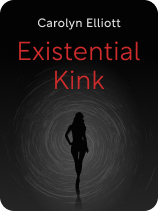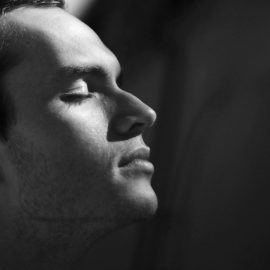

This article is an excerpt from the Shortform book guide to "Existential Kink" by Carolyn Elliott. Shortform has the world's best summaries and analyses of books you should be reading.
Like this article? Sign up for a free trial here.
How does Carolyn Elliott define fear? What does she think comprises an effective ethical compass?
In Existential Kink, Carolyn Elliott explains what existential kink is and how it emerged from Jungian psychology. She also provides activities to help you incorporate existential kink into your life.
Below are three Existential Kink quotes that illustrate Elliott’s main ideas in the book.
Quotes From Existential Kink
We all have negative patterns we see playing out again and again in our lives—but have you ever thought you might secretly enjoy these patterns? In Existential Kink, writer and teacher Carolyn Elliott argues that the negative patterns in our lives are manifestations of what we unconsciously desire. Embracing and taking emotional and physical pleasure in such desires (practicing existential kink) will help dissolve them. And when we dissolve these desires, they no longer have a hold over us, which frees up our time and energy so we can want and manifest positive things in our lives.
We’ve collected a few of the best Existential Kink quotes to help you understand the concept better.
“Fear is just excitement without breath.”
Fear is often what stops us from receiving the “positive” patterns we think we want. In fact, Elliott explains, fear and desire always coexist: Everything we desire is something we fear to some degree, and everything we fear is something we desire in some way. For example, you may tell yourself you want to achieve better health, but deep down there’s something about improving your health that you fear, and this fear is why you keep manifesting the opposite. This process is about acknowledging that it’s not because of bad luck or the cruelty of the universe that you don’t have what you want: It’s because you’re afraid of it.
To confront your fears, identify something you think you consciously want but can’t seem to achieve, and then write at the top of a sheet of paper that you hate or refuse to have that thing. Below that, list 20 fears you associate with it. For example, if you want to get your graduate degree, you might write that you refuse to pursue a graduate degree, and list fears such as “I’m afraid I won’t get good grades,” “I’m afraid of the high costs, and I’m unwilling to feel the responsibility of making it worth the money,” or “I’m afraid of what I might discover about myself.” This puts you face-to-face with the internal sensations that are preventing you from achieving what you want.
After listing your fears, include a statement at the bottom asking the universe to remove your fears. Read the whole thing to another person, then tear it up and throw it away. This way you acknowledge the negative emotions associated with this thing you think you want, and then you release them into the universe. The more you do this, the less power your fears will have over you, and the more control you’ll have over your life and self.
“If you want to know who you unconsciously believe you are, just take a look at your life, your surroundings, your relationship. Your life mirrors those deep beliefs.”
Elliott bases many of her ideas of unconscious desires on the work of Carl Jung, who established the idea that our conscious minds, or our egos, comprise only a tiny fraction of who we actually are. The rest of our selves exist in the unconscious.
(Shortform note: Jung’s theories have faced considerable criticism due to their lack of empirical evidence making it impossible to prove his ideas wrong. Elliott’s ideas are similarly theoretical and are founded largely in her personal experiences and observations.)
Our conscious minds make choices based on polarities (such as light and dark, wealth and poverty, strength and weakness), and specifically, based on the side of each polarity that aligns with our identities. For example, we collectively view strength as a good thing and weakness as a bad thing, so we’re encouraged to seek to be and identify as strong. This leads us to consciously make decisions that we think make us feel or look stronger and avoid decisions that make us feel or look weak.
However, our world is made up of polar opposites: Both the good and the bad sides of any thing or issue exist, like wealth and poverty, life and death, courage and fear, and so on. So by identifying with only one side and alienating ourselves from the other (for example, by seeking happiness and spurning sadness, or valuing control and devaluing helplessness) we divide our whole self, repressing the aspects of ourselves that we view as negative and shameful but which our unconscious is deeply curious about.
(Shortform note: Sigmund Freud went so far as to suggest that humans have a death drive, or an inherent desire to return to a state of nonexistence, which would seem to conflict with the idea that we evolved to seek survival. This death drive may be responsible for things like self-destructive behaviors or l’appel du vide (literally, “the call of the void”), a phenomenon wherein we have sudden thoughts of doing things like jumping from a deadly height for no apparent reason.)This repression leads us to exist in a divided state, seeking only the “positive” and trying to avoid the “negative” even though we secretly want to experience the negative, too. But the unconscious subtly attracts what it wants, and thus we attract things we’re not willing to admit we want (such as poverty, weakness, or sadness).
Because these desires to experience the negative won’t go away until we satisfy them, and we can’t satisfy a desire we won’t acknowledge, this unwillingness undermines our ability to attract the positive things we are willing to admit we want (or at least, that we know we’re supposed to want). This is how we end up watching negative patterns continue to play out in our lives.
While it may seem absurd that anyone would want to only be in relationships with controlling partners or constantly struggle to pay the bills, Elliott explains that on an existential level we desire wholeness, not division, and the positives in these situations—being in relationships with good partners or having no trouble paying the bills—is only one half of the whole. To become whole beings, we need to exist and revel in our repressed desires and take pleasure in them so we can satisfy them. This will ultimately loosen their hold on us so that we no longer desire the things that make our lives worse. Practicing existential kink is about embracing both sides of these polarities, becoming whole, and taking control of your fate.
“If we all allow ourselves to feel the unconscious, divine, kinky pleasure we’ve been suppressing, then we are left with just our intelligence to guide our decisions, and that’s great. Your own intelligence and consciously chosen principles are a much better ethical compass than your reactive feelings of guilt.”
The basic method of employing existential kink is through meditation. Elliott describes a six-step process for an existential kink meditation practice, which we’ve condensed into four steps.
Step 1: Relax and create a comforting space. Since existential kink involves noticing physical sensation in response to your thoughts and feelings, you should be as relaxed as possible before you begin. This will allow you to better tap into your body and mind so you can be more aware of your feelings and sensations. Elliott recommends using incense and a candle, along with a 15-minute timer to keep you centered in the moment and to keep you from losing track of time.
Step 2: Choose a life event or circumstance to reflect upon. This should be something that your conscious mind dislikes, or something that you would typically label “bad.” This works best for recurring patterns. As an example, imagine you find yourself drawn to romantic partners who are distant or unreliable, and even though this frustrates you, it continues to play out in your life.
Step 3: Notice the bodily sensations and emotions that this circumstance evokes in you, and revel in them. Elliott explains that this involves approaching these feelings from a sadomasochistic perspective, allowing yourself to take “kinky” pleasure in these ostensibly negative feelings. This doesn’t mean coming to enjoy the negative situation itself, merely the sensations it evokes in you (which are the sensations your unconscious is seeking). In the case of the distant partner, you probably don’t enjoy rarely seeing your partner, but you might be drawn to the feeling of martyrdom you get when you complain about how unreliable they are.
It may help to pretend the circumstance you’re reflecting on is going to magically disappear from your life in a month so you can feel more open and honest about it. It can also help to give yourself explicit permission to feel good about these things, or even to talk dirty to yourself about how much you like them. This will culminate in an emotional and physical release not unlike (and possibly including) an orgasm.
Step 4: Allow yourself to connect with your unconscious and embrace gratitude for what you’re experiencing and feeling. In the previous step, you allowed yourself to feel joy from the feelings surrounding your “negative” experiences, but, in this step, you’re identifying and connecting with the part of your unconscious that has these feelings. Here, you’ll move past the feelings and fully embrace and feel gratitude for the negative situations that caused them.
This is the step when your unconscious and conscious merge, putting you in touch with your whole self as you come to understand that you as a curious human seeking to experience all of life, both the good and the bad. The more you do this, the more uninteresting the “negative” circumstances will become and the more easily you can let them go. Still, your goal in this practice should be to just feel and enjoy, not to get rid of the bad things in your life.
Returning to our example, in this step you would acknowledge that your unconscious wants these feelings of independence and has created this situation (the pattern of seeking distant partners) in order to achieve those feelings. Instead of feeling bad or resentful for this, you give thanks to your unconscious for the relationships in your life that it created.
Elliott gives some caveats about existential kink. She explains that it’s not a good idea to attempt this meditation when you’re feeling depressed or dealing with a recent trauma, as it can cause you to ruminate on your negative feelings and make you feel worse. Additionally, you shouldn’t use this process if you’re currently grieving, as you’ll need some distance from the situation to view it with gratitude. Finally, reflecting on childhood trauma during this process can also cause you to feel worse, because we have very little control over the things that happen to us as children, and existential kink is most useful when we reflect on things we choose or have control over.

———End of Preview———
Like what you just read? Read the rest of the world's best book summary and analysis of Carolyn Elliott's "Existential Kink" at Shortform.
Here's what you'll find in our full Existential Kink summary:
- That the negative patterns in our lives are manifestations of what we desire
- How to dissolve your negative desires so they lose hold over your life
- How to practice existential kink meditation






